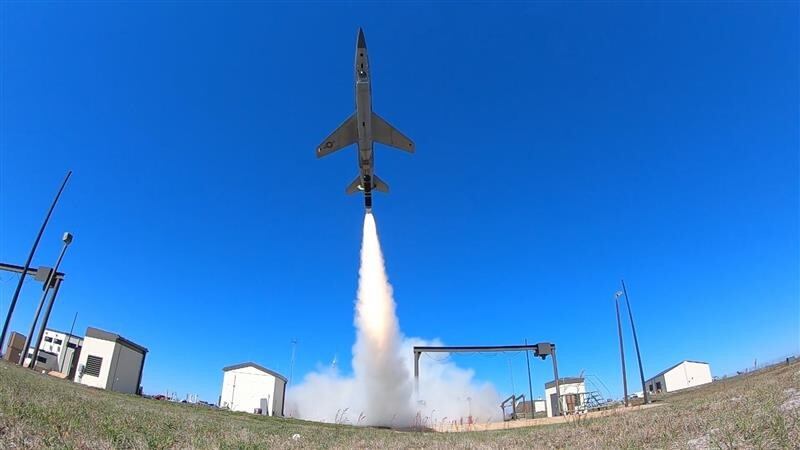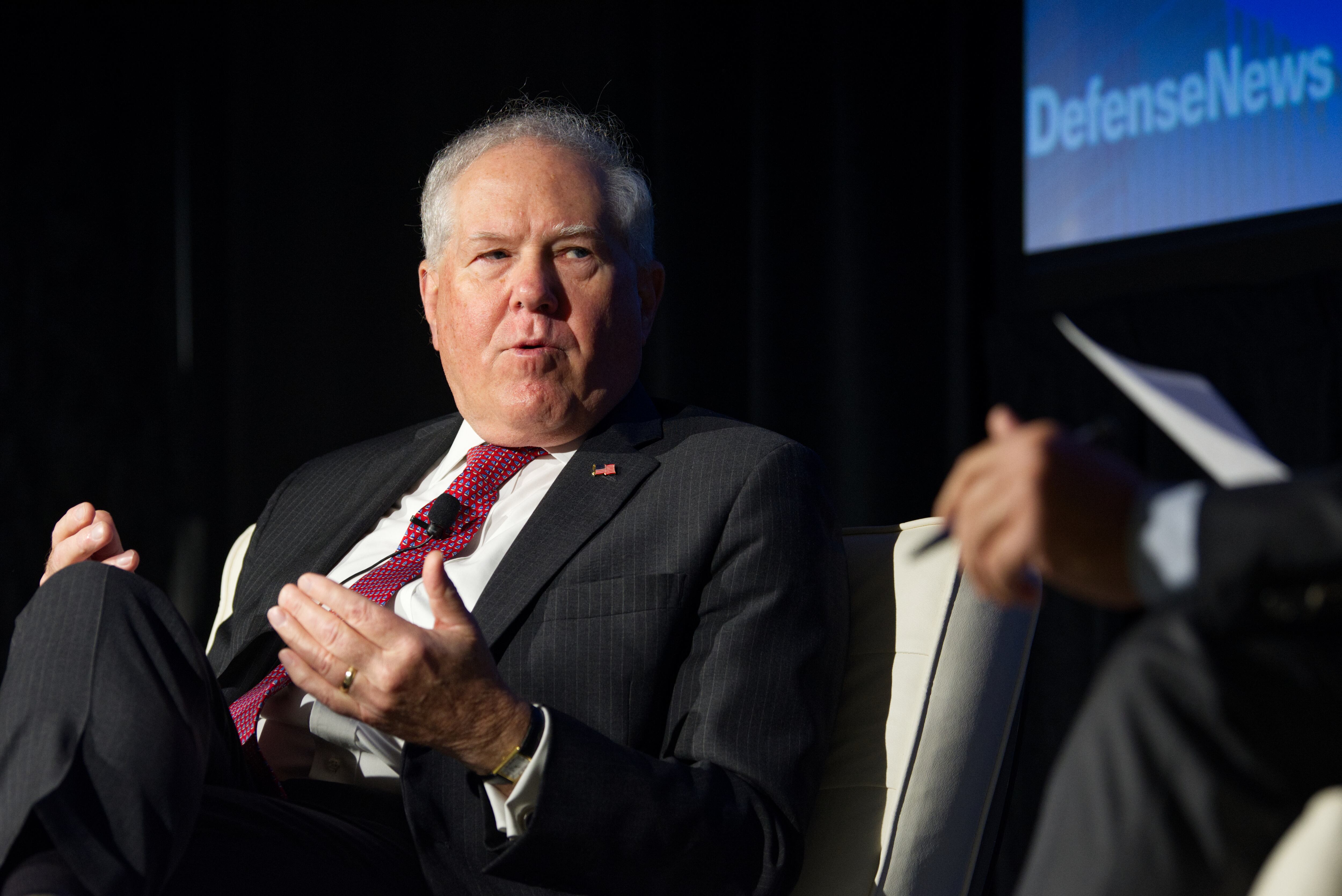WASHINGTON — The U.S. Air Force is likely to hold a competition in 2024 for autonomous drone wingmen that would team up with manned fighters such as the F-35, Secretary Frank Kendall said Wednesday.
Speaking at the Defense News Conference in Arlington, Virginia, Kendall said the Air Force is sorting out the competition’s requirements, even as it prepares for a future with drone wingmen flying alongside traditional fighters.
Kendall has made manned-unmanned teaming — or as the Air Force calls the drone wingmen, collaborative combat aircraft — one of his top priorities. He envisions as many as five drones flying alongside aircraft and performing missions such as strike, reconnaissance and electronic warfare, or serving as decoys to draw fire, with limited instructions from a human pilot.
Kendall hopes this will extend the reach of the Air Force’s fighters, and noted that autonomous drones could also team up with fourth-generation fighters.
He added that the Boeing MQ-28 Ghost Bat, which the Royal Australian Air Force has tested, or a variant of that could be a competitor for this program. The Ghost Bat could also be used for early operational experiments to test out the concept of manned-unmanned teaming, he noted. That could include figuring out how best to integrate them with existing aircraft, testing maintenance concepts, and developing tactics, techniques and procedures for how it might work.
“One of the things we need to do as we’re developing the uncrewed combat aircraft mission equipment capability and finalizing the requirements is to start to learn about how an aircraft like that would fit into an operational unit,” Kendall said. “How you structure the unit, what kind of support people you’d have to have, how you’d integrate it into battle management and into operations.”
Kendall said the process of integrating drone wingmen into units on an operational level will be “unprecedented,” so it will help to have tested these capabilities beforehand, possibly with the Ghost Bat.
Kendall said modularity could be important for collaborative combat aircraft, allowing for adjustment according to the mission at hand.
Because a drone wingman could be sacrificed, Kendall said, it might not need all the protective subsystems a manned aircraft could require, which would help keep down costs. And the modularity “raises the uncertainty that the adversary has to deal with because he doesn’t know what’s in any given aircraft,” Kendall said. “He has to take each of them seriously as a threat. So whether they all carry weapons, or a subset carry weapons, he has to treat them all as if they do. He doesn’t get a choice.”

Kendall said the Air Force still hasn’t settled on details of how and when a solicitation might take place. But he explained that as the service sorts out its acquisition strategy, early conversations are already taking place with companies involved in the Next Generation Air Dominance program.
The Air Force also wants to talk to companies working on the Skyborg program, which tests artificial intelligence in drones. General Atomics and Kratos are some of the businesses that have contracts with Skyborg.
Price tag
Kendall said the fiscal 2024 budget proposal, when it is released next year, will not have details on the competition, since it is a classified, program.
Keeping the cost of collaborative combat aircraft under control will be crucial because it will inevitably lose some drones in combat, he added. He doesn’t want these drone wingmen to cost any more than half the price of an F-35, noting they would likely cost much less. The most recent lot of F-35As had a unit cost of $77.9 million.
If the drones are affordable enough to be bought in quantity, and can even draw fire to give the U.S. a tactical advantage, that will open up new opportunities, he said.
The equipment loaded on individual drone wingmen will also be a major driver of how much each one costs, he added.
Kendall said the drone wingmen portion of NGAD could provide a way for international partners to contribute to that program, noting there have been early discussions and “a lot of interest” in that program in recent conversations with counterparts in Australia, Japan and the United Kingdom.
But there is less interest from allies in the manned portion of NGAD due to its cost, he said, making it unlikely it will be an international program akin to the F-35.
In an April hearing, Kendall put the price tag of NGAD at hundreds of millions of dollars apiece.
When asked whether the nation can afford a program with that kind of a cost, Kendall replied: “Can the nation afford not to have air superiority? We have to have air superiority.”
However, he would not answer when asked at the Defense News Conference what kind of capabilities NGAD would bring that could make such a price tag worth it.
Kendall also told lawmakers in April that the service was taking steps in the design process to try to control the costs of NGAD.
When asked Wednesday what steps are being taken to keep costs down, Kendall said the system is being designed in a “collaborative” environment, where competitors and the Air Force are working alongside one another. The transparency this allows the design process to be more efficient, he said, because the government’s engineers can talk directly with the contractors on issues such as cost early on.
“Sound judgments can be made on whether the requirements are really worth the cost or not,” Kendall said.
And the NGAD program is taking advantage of advanced manufacturing technologies and best practices such as using digital design, similar to the techniques that were used to design the T-7A Red Hawk trainer, he said.
“There is real change occurring in engineering and design practice … which is going to be helpful to us,” Kendall said.
But because NGAD is a classified program, he was tight-lipped on the program’s next steps, aside from saying the Air Force wants to get it into production as quickly as it can.
Stephen Losey is the air warfare reporter for Defense News. He previously covered leadership and personnel issues at Air Force Times, and the Pentagon, special operations and air warfare at Military.com. He has traveled to the Middle East to cover U.S. Air Force operations.








